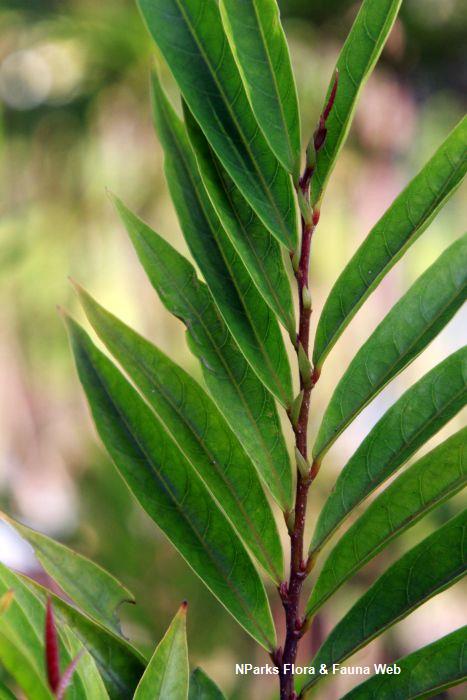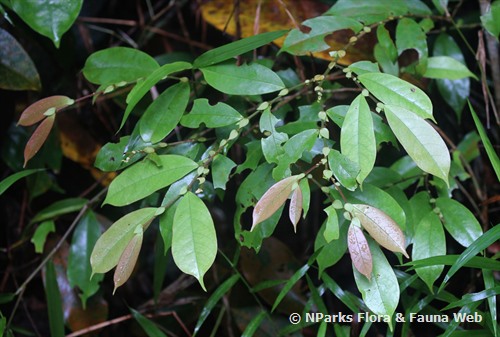
Back
Antidesma cuspidatum Müll.Arg. var. cuspidatum
| Family Name: | Phyllanthaceae |
| Common Name: | Buni, Kayu Buloh |
Name
Classifications and Characteristics
| Plant Division | Angiosperms (Flowering Seed Plants) (Dicotyledon) |
|---|---|
| Plant Growth Form | Tree (Medium (16m-30m)) |
| Lifespan (in Singapore) | Perennial |
| Mode of Nutrition | Autotrophic |
| Plant Shape | Irregular |
| Maximum Height | 17 m |
Biogeography
| Native Distribution | Peninsular Malaysia, Singapore, Sumatra,and Borneo |
|---|---|
| Native Habitat | Terrestrial (Primary Rainforest, Freshwater Swamp Forest) |
| Preferred Climate Zone | Tropical |
| Local Conservation Status | Native to Singapore (Least Concern (LC)) |
Description and Ethnobotany
| Growth Form | It is a tree, up to 17 m tall. |
|---|---|
| Foliage | Its alternate, stalked leaves have leathery leaf blades that are oblong to egg-shaped, and 7-23 by 2.5-9 cm. |
| Flowers | Its tiny flowers are arranged on a branched flowering shoot that is 5-18 cm long. |
| Fruit | Its lens-shaped fruits are usually shiny black when dry, and 5-7 mm long. |
| Habitat | It grows in lowland forests, sometimes on swampy grounds from the lowlands up to 1,600 m altitude. |
| Associated Fauna | It is the food plant for caterpillars of the moth, Phycidopsis albovittata. Its fruits are eaten by birds. |
| Cultivation | It can be propagated by seed. |
| Ethnobotanical Uses | Timber & Products: The hard, fine-grained timber is used for small pieces of work because it is not available in large quantities. The wood is also used for burning. |
Landscaping Features
| Landscaping | Its attractive fruits are produced along branches. It is a tree suitable for gardens, parks or roadsides. |
|---|---|
| Desirable Plant Features | Ornamental Fruits |
| Landscape Uses | General, Suitable for Roadsides, Parks & Gardens, Small Gardens |
Fauna, Pollination and Dispersal
| Fauna Pollination Dispersal Associated Fauna | Bird-Attracting, Caterpillar Moth Food Plant |
|---|---|
| Pollination Method(s) | Biotic (Fauna) |
| Seed or Spore Dispersal | Biotic (Fauna) |
Plant Care and Propagation
| Light Preference | Full Sun, Semi-Shade |
|---|---|
| Water Preference | Moderate Water, Lots of Water |
| Plant Growth Rate | Moderate |
| Rootzone Tolerance | Moist Soils, Well-Drained Soils, Fertile Loamy Soils |
| Propagation Method | Seed |
Foliar
| Foliage Retention | Evergreen |
|---|---|
| Mature Foliage Colour(s) | Green |
| Mature Foliage Texture(s) | Leathery |
| Foliar Type | Simple / Unifoliate |
| Foliar Arrangement Along Stem | Alternate |
| Foliar Attachment to Stem | Petiolate |
| Foliar Shape(s) | Non-Palm Foliage (Elliptical, Oblong) |
| Foliar Venation | Pinnate / Net |
| Foliar Margin | Entire |
| Leaf Area Index (LAI) for Green Plot Ratio | 3.0 (Tree - Intermediate Canopy) |
Floral (Angiosperm)
| Flower & Plant Sexuality | Unisexual Flowers , Dioecious |
| Flower Colour(s) | Green |
|---|
| Flower Grouping | Cluster / Inflorescence |
| Flower Location | Axillary |
| Inflorescence Type | Raceme |
Fruit, Seed and Spore
| Fruit Classification | Simple Fruit |
|---|---|
| Fruit Type | Fleshy Fruit |
References
| References | Tan, P.Y., R.T. Corlett and H.T.W. Tan (Editors). 2010. A Field Guide to the Native Garden @ HortPark: an Urban Oasis of the Native Flora and Fauna of Singapore. Singapore: Centre for Urban Greenery and Ecology (National Parks Board) and National University of Singapore. 124pp |
|---|
Image Repository
Others
| Master ID | 1422 |
|---|---|
| Species ID | 2715 |
| Flora Disclaimer | The information in this website has been compiled from reliable sources, such as reference works on medicinal plants. It is not a substitute for medical advice or treatment and NParks does not purport to provide any medical advice. Readers should always consult his/her physician before using or consuming a plant for medicinal purposes. |



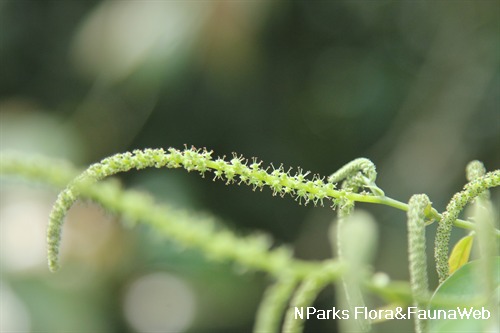
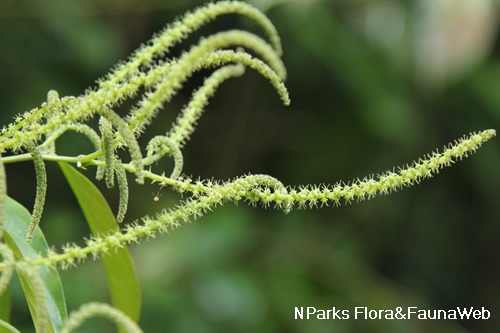

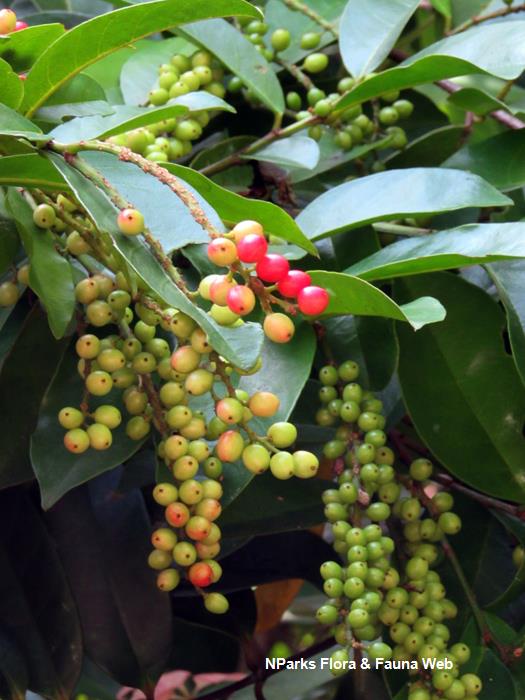
_lowres.jpg)
